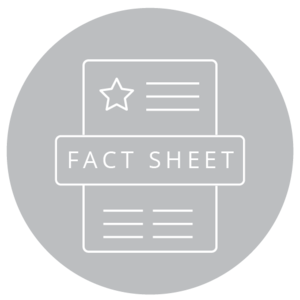Standards and Legislation
Standards define nutrients and nutrient levels
When a country chooses to fortify cereal grains, it must decide what vitamins and minerals to include. It must also determine the levels of each nutrient to add. The results of these decisions are the basis for the country’s food fortification standards.
Factors to Consider in Setting Country Standards
Consumption: If consumption is high, lower amounts of nutrients are needed per kilogram of grain to create a positive health outcome. If consumption is low, higher levels are needed.
Type of flour: Flour where more than 80% of the grain is used is also known as high extraction flour, whole wheat flour, or atta flour. High extraction means that a high percentage of the whole grain was extracted. High extraction flour retains high levels of wheat’s natural phytates which inhibit the body’s ability to absorb iron and zinc. Consequently only the highly bioavailable sodium iron EDTA (NaFeEDTA) is recommended for high extraction flour. Also, the amount of zinc added to high extraction flour should be higher than the amount used for low extraction flour.
Type of iron: The iron compounds recommended for wheat and maize flour fortification include ferrous sulfate, ferrous fumarate, and sodium iron EDTA (NaFeEDTA). Electrolytic iron is only recommended if flour availability is more than 150 grams per person per day. The iron compounds have different levels of bioavailability to consumers and different costs for millers. Ferric pyrophosphate is the iron compound most frequently used with rice fortification.
Other food fortification: If other foods are effectively fortified and they reach the majority of the population, the nutrient may be left out of grains. For example, vitamin A is often added to vegetable oils or margin and not added to flour.
Range: Effective food fortification nutrient standards specify a minimum and maximum level of each vitamin and mineral to use in fortification. This provides a level that can be expected to have a health impact while allowing some margin so that implementation is practical. Millers rarely exceed the maximum because it would be costly to do so.
Sensory outcomes: Global recommendations for fortification are based on levels that will not affect the product’s taste, smell, or appearance. If your country is considering a standard that exceeds the global recommendations, cooking trials may be needed to ensure that the fortification does not have a negative impact on the final food product.
Some people fear that iron could cause sensory problems at the levels recommended if flour consumption is less than 150 grams per capita per day. However a study of 15 kinds of noodles and breads commonly eaten in Asia showed that the foods would be acceptable to consumers if the food were made with fortified flour. The study included foods fortified with recommended iron levels for groups that eat less than 150 grams per capita per day.
A series of baking trials in Kenya, South Africa, and Tanzania showed that wheat flour and maize meal fortified using global guidelines caused no changes in the baking or cooking properties. Participants could not consistently perceive differences between fortified and unfortified products.
Muehlenchemie conducted tests to determine how different forms of iron affect the color of pasta. The company also analyzed the cooking water of the pasta with soluble iron forms. The results showed a loss 5% of iron in non-enriched pasta (natural value), a loss of 7% in enriched pasta with fumarate and sulfate, and a loss of 40% in EDTA-enriched pasta.
Global recommendations provide information on iron, folic acid, vitamin B12, vitamin A, and zinc levels for fortification. Regional recommendations may be available for fortification with thiamin, riboflavin, and niacin which are other B vitamins frequently added to flour. Also see a guide to setting food fortification nutrient levels.
The minimal amount to restore the nutrients that were in wheat naturally but lost in the milling process are:
Thiamin (vitamin B1): 6.4 parts per million (ppm)
Riboflavin (vitamin B2): 4.0 parts per million (ppm)
Niacin (vitamin B3): 53 parts per million (ppm)
Note: Parts per million equals milligrams per kilogram.
For More Information:
Legislative frameworks for corn flour and maize meal fortification
Presentation on fortifying with B vitamins, calcium, and magnesium.
European Union guidelines and regulations in EU Reg. 1925:2006 and EU Reg. 1170/2009.
Summaries of two workshops leading to the current global guidelines: Atlanta in 2008 and Mexico in 2004.
Sample legislation and standards from several countries.

Photo: FFI
Legislation leads to country-wide fortification
We encourage mandatory rather than voluntary fortification because legislation leads to country-wide fortification which creates the desired health impact. Country-wide fortification is usually not achieved without legislation.
Mandatory programs that are adequately monitored:
Enable regulatory authorities to monitor fortification for compliance with the standard. This helps ensure quality.
Create a business environment where all millers must fortify and therefore incur similar costs. This helps secure the sustainability of the program.
Distribute the health benefits across the entire population consuming foods made with grains from industrial mills.
Effectively remove non-fortified products from the market.
Effective legislation specifies the types of grain to be fortified, such as rice, wheat or maize. For wheat and maize flours, legislation details whether high or low extraction flours, or both, will be fortified. Legislation outlines how authorities will monitor fortification, and it includes penalties for non-compliance.
Legislation identifies who will pay taxes and duties related to the ongoing cost of fortification, including import duties, customs fees, inspection fees, provincial taxes, municipal dues, value added tax, and goods and services tax. Some countries eliminate such fees for fortification premix and equipment to lower the millers’ cost to fortify.
Experience with other staple foods supports the emphasis on mandatory fortification. Countries with legislation to fortify salt with iodine have a greater increase in household consumption of iodized salt than countries without legislation [1]. And regulation that makes adding vitamin A to cooking oil mandatory is seen as the most effective way to reach the poorest consumers who are more concerned about pricing than branding [2].
We recommend that countries separate standards from legislation. The legislation requires fortification, while the standard outlines specific ranges of nutrients to be included. Legislation usually requires time-consuming government action when it needs modification. If the standard is a separate document, fortification levels can be more easily adapted as a country’s needs change.
For more information:
See this manual to guide the formulation of regulations for fortified foods to address micronutrient deficiencies.
See this review of items that should be included in legislation, standards and monitoring documents produced by countries.
See more in this perspective article, Mandatory policy: Most successful way to maximize fortification’s effect on vitamin and mineral deficiency.
Review this expert panel’s report arguing why mandatory fortification is the most effective public health strategy to increase nutrient intakes.
(1) Sustainable Elimination of Iodine Deficiency: Progress Since the 1990 World Summit for Children. UNICEF New York, 2008.
(2) Gradl, Christina, Building a Strategic Alliance for the Fortification of Oil and Other Staple Foods (SAFO). Cambridge,MA: The CSR Initiative at the Harvard Kennedy School, 2012.




